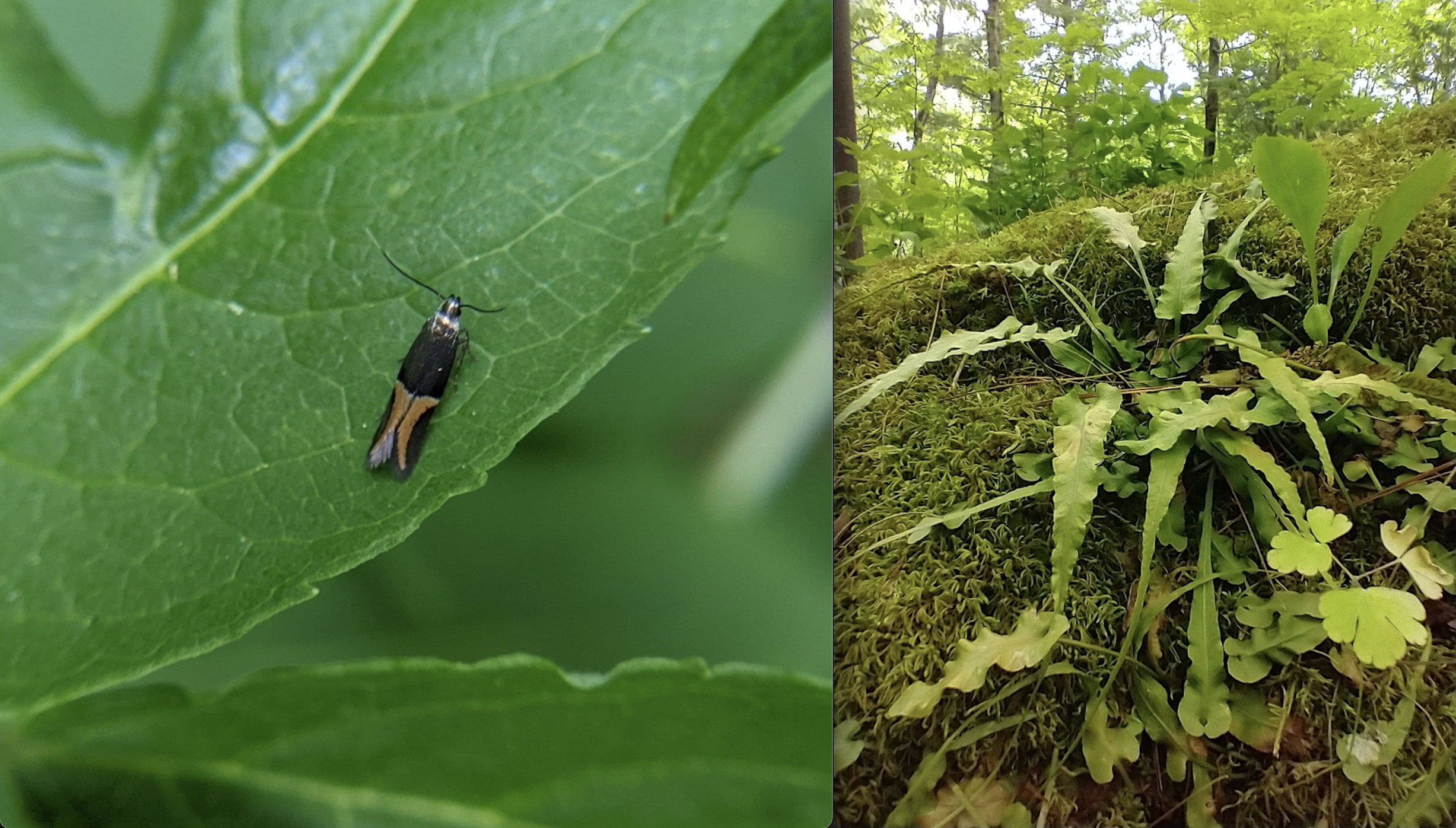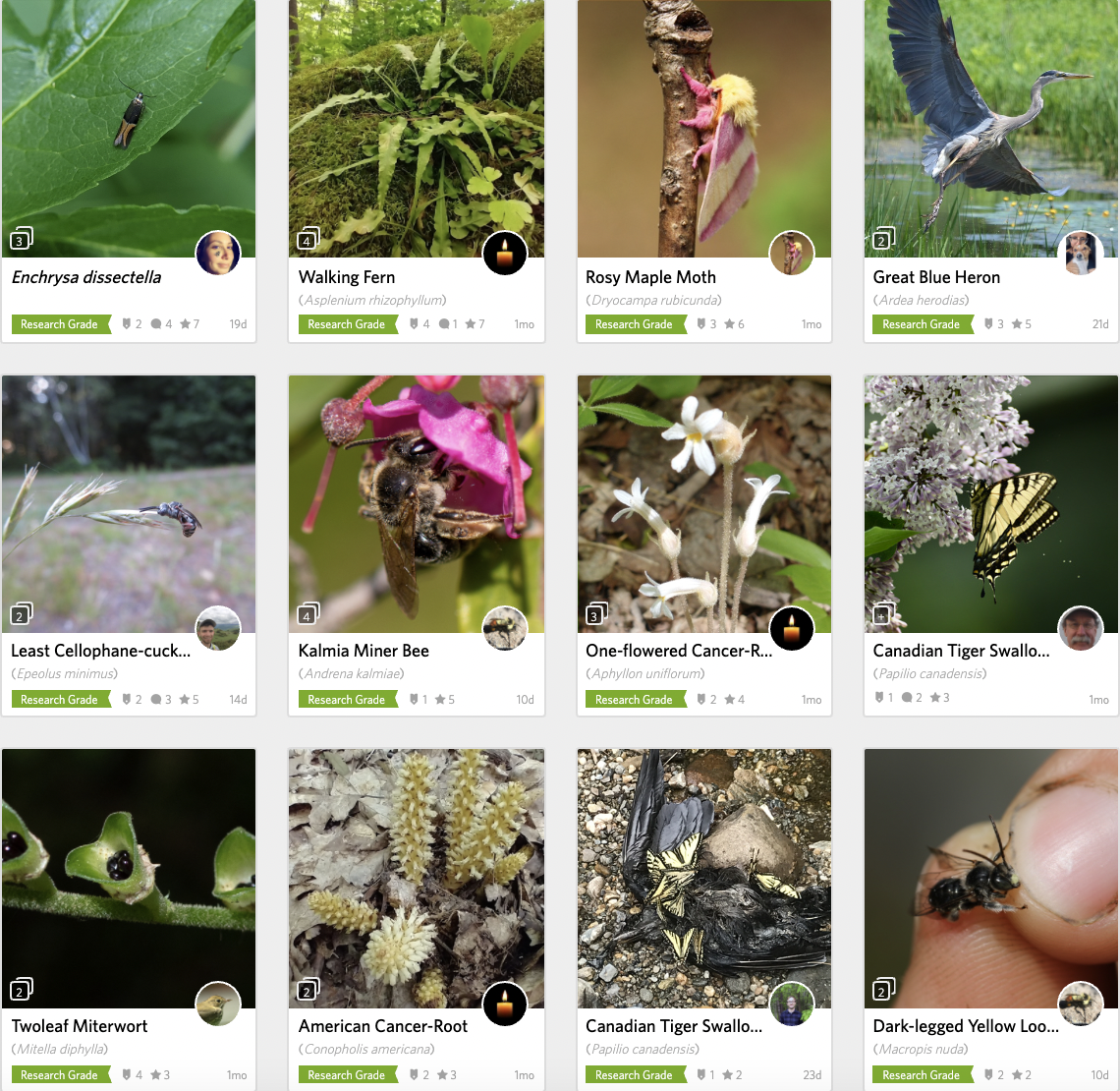June 2021 Photo-observations of the Month

On left, Enchrysa dissectella, a new moth for the state of Vermont! © Sarina. On right, a Walking Fern spreads across a mossy boulder. © Tom Norton.
Congratulations to Tom Norton and Sarina for winning the June 2021 Photo-observations of the Month for Vermont Atlas of Life on iNaturalist. Sarina’s photo of Vermont’s first record of a moth called Enchrysa dissectella and Tom’s photo of a large patch of Walking Fern tied for the two most-faved observations in Vermont this month.
The moth known as Enchrysa dissectella has no common name and is known to range from southern Canada to North Carolina. Little else is known about this species besides its identifying markings, which most noticeably include two curved orangey stripes on the outer half of the wings. This is the first time this moth species has ever been documented in Vermont, contributing to the vast and ever-expanding Vermont Moth Atlas which includes more than 2,200 different species. Interestingly, Sarina returned a few days later to the site where the moth was first spotted and encountered the same moth species, perhaps even the same individual!
Tom Norton, better known to many iNaturalist users as simply ‘tsn’, is an identifying machine. He has provided more iNaturalist identifications than any other Vermonter, and his nearly 65,000 iNaturalist identifications in Vermont alone have helped out just about anyone who has submitted an observation to the Vermont Atlas of Life. No slouch, Tom also submits many iNaturalist observations himself, including his winning photograph of a Walking Fern spreading across a glacial erratic boulder covered in lush moss. Walking Fern is often found on mossy boulders or rocky hillsides and has a fascinating way of spreading across a patch of suitable substrate, as seen in Tom’s photo. By rooting anywhere the tip of a frond touches moist soil, new ‘children’ can begin to grow in an expanding circle around the original ‘parent’ plant. These tufts of ferns “walk” across boulders and hillsides slowly but steadily, and this unique style of growing gives them their name.

With 29,048 observations submitted by 1,900 observers in June, it was very competitive. Click on the image above to see and explore all of the amazing observations.
Visit the Vermont Atlas of Life on iNaturalist where you can vote for the winner this month by clicking the ‘fave’ star on your favorite photo-observation. Make sure you get outdoors and record the biodiversity around you, then submit your discoveries and you could be a winner!



Comments
Add a Comment